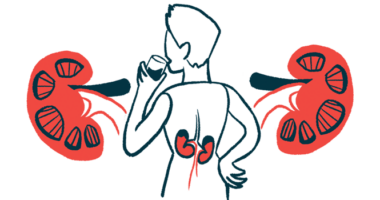Case Stresses Importance of Monitoring for Post-transplant Infections

Because viral infections can worsen atypical hemolytic uremic syndrome (aHUS), researchers recommend testing patients for infections that are common following an organ transplant.
They describe the case of patient, whose aHUS symptoms recurred after undergoing a kidney transplant, in their report, “Concurrent cytomegalovirus enteritis and atypical hemolytic uremic syndrome with gastrointestinal tract involvement: a case report,” which was published in the Korean Journal of Transplantation.
aHUS is characterized by inflammation in the body’s small blood vessels. This can cause damage to various internal organs, particularly the kidneys. As a result, many people with aHUS may eventually require a kidney transplant.
Following an organ transplant, patients generally are put on therapies that lower the activity of the immune system to ensure their body will not reject the transplanted organ. However, since the immune system also helps to fend off infectious invaders, the risk of contracting infections is elevated following an organ transplant.
The risk of infection from a type of virus called cytomegalovirus, or CMV, is particularly high following a kidney transplant. This virus is very common, and most people who are infected will never experience health problems. However, CMV can cause disease in people with weakened immune systems, and is also a concern for babies whose immune systems are still developing.
In the report, scientists in Korea described the case of a 17-year-old with aHUS who had previously undergone a kidney transplant. She was admitted to the hospital with symptoms of abdominal pain and vomiting.
Blood tests were indicative of an aHUS recurrence, and the patient was treated with an anti-C5 antibody — a class of medications that includes Soliris (eculizumab) and Ultomiris (ravulizumab); the specific medication used in this case was not specified. The treatment normalized blood values, but digestive complaints persisted.
Clinicians then performed an esophagogastroduodenoscopy, a procedure that uses an endoscope — basically a tube with a camera at the end — to visualize the inside of the stomach and the duodenum (the upper part of the small intestine).
This revealed lesions that were “consistent with aHUS and CMV enteritis [intestinal inflammation],” the researchers wrote.
Further blood tests showed the patient did not have CMV antigenemia, essentially meaning there was no detectable virus in the bloodstream.
“In [kidney transplant] recipients, regular check-up for CMV infection is extremely important, however, in cases of CMV [digestive] diseases, screening of blood sampling alone is not always diagnostic. In fact, our patient did not show CMV antigenemia during the course of CMV enteritis,” the researchers wrote.
The patient was treated with anti-viral therapies for CMV infections (ganciclovir followed by valganciclovir), and her digestive symptoms quickly resolved. She was able to leave the hospital on the 30th day after admission, and follow-up several months later suggested continued improvement.
“This case shows that recurrence of aHUS is often induced by intercurrent infection, and common infections after [kidney] transplantation, such as CMV, should always be suspected and confirmed for a proper treatment, particularly because CMV enteritis may not accompany CMV antigenemia,” the researchers wrote.








